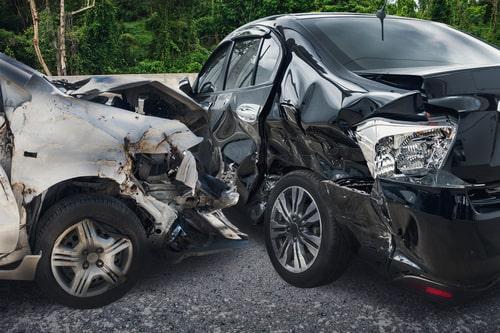Follow Us |Facebook
Call or Text for a Consultation
Recent Blog Posts
Steps to Take after a Car Accident
 It may be difficult to deal with all of the aftermaths of a car accident. However, there are steps to take after you have been injured and your car has been damaged in an accident. You could face a number of challenges when it comes time to discussing medical care, treatments, rates with insurance companies, and other issues surrounding your damaged vehicle. Take these precautionary steps so that you will be prepared if you get into a car accident.
It may be difficult to deal with all of the aftermaths of a car accident. However, there are steps to take after you have been injured and your car has been damaged in an accident. You could face a number of challenges when it comes time to discussing medical care, treatments, rates with insurance companies, and other issues surrounding your damaged vehicle. Take these precautionary steps so that you will be prepared if you get into a car accident.
Stay at the scene of the accident and make sure to exchange information.
Do not leave the scene of an accident until appropriate to do so because you may face serious criminal penalties for being a hit-and-run driver. Once you are out of your vehicle and communicating with the other driver do not apologize and do not try to admit guilt unintentionally or unnecessarily.
Remember to get the names, numbers, addresses, driver's' license numbers, plate numbers, and basic insurance information from all passengers involved as well.
Dog Bite Laws in Illinois
 Being bit by a dog, or another animal, may not be the first thought that comes to mind when thinking of a personal injury case. However, in the state of Illinois, man’s best friend can get into trouble with the law and it’s up to the owner to right the wrongs of the crime.
Being bit by a dog, or another animal, may not be the first thought that comes to mind when thinking of a personal injury case. However, in the state of Illinois, man’s best friend can get into trouble with the law and it’s up to the owner to right the wrongs of the crime.
According to Illinois law, if a dog bites or acts out and was not provoked by the injured person, the person that owns the dog becomes responsible for the dog’s actions. Even if the owner behaves cautiously with their dog, they will still be at fault. This means that they also become liable for the injuries that were caused. Illinois has a statute that states that an owner can be any person that has a right of property for an animal. Be mindful that if you are dog-sitting, these laws still apply to you.
Dog Bite Statistics
Animals can cause injuries to occur annually not just in Illinois, but across the U.S as well. There are a number of dog bite-related statistics that prove this to be true. Listed below are just a few:
Chicago Joins Vision Zero Alliance to Address Traffic Fatalities
 Recently, Chicago had the honor of being named the best bicycling city in the United States. The city takes the top spot thanks to Divvy, now the largest bike-share system in North America, along with the addition of 148 miles of protected bike lanes since 2011. The many bike paths and walking trails both within and outside of the city also contribute to Chicago’s reputation as a pedestrian-friendly, walkable urban garden. Unfortunately, with so many cyclists and pedestrians on the streets, pedestrian and vehicle accident rates continue to be a source of tragedy.
Recently, Chicago had the honor of being named the best bicycling city in the United States. The city takes the top spot thanks to Divvy, now the largest bike-share system in North America, along with the addition of 148 miles of protected bike lanes since 2011. The many bike paths and walking trails both within and outside of the city also contribute to Chicago’s reputation as a pedestrian-friendly, walkable urban garden. Unfortunately, with so many cyclists and pedestrians on the streets, pedestrian and vehicle accident rates continue to be a source of tragedy.
Walking and Biking in the City Still a Dangerous Proposition
So far this year, Chicago has seen the first bike-share program accident fatality in the nation, and at least five other cyclists have been killed in auto accidents. A recent report indicated that yet another cyclist, a student at Northwestern University, was killed in an accident with a cement truck, bringing that total even higher. One prominent University of Chicago doctor was killed in a collision with a car while jogging early this summer.
New Illinois Bike Law Effective Early 2017
 There have been specific laws put into place to help protect bicyclists while they are riding alongside other moving vehicles on the road over the years in the state of Illinois. Although Chicago has the reputation of being a bike-friendly state, accidents may still occur regularly which is why bike laws are important to be aware of. As recent as 2014, Illinois was among the top states for bicyclist fatalities. Statics like these have led to changes in the bike-related laws.
There have been specific laws put into place to help protect bicyclists while they are riding alongside other moving vehicles on the road over the years in the state of Illinois. Although Chicago has the reputation of being a bike-friendly state, accidents may still occur regularly which is why bike laws are important to be aware of. As recent as 2014, Illinois was among the top states for bicyclist fatalities. Statics like these have led to changes in the bike-related laws.
Earlier this year a law was signed in and will officially take effect January 1, 2017, in response to the number of bicycle-related injuries and deaths in the state of Illinois. House Bill 5912 went through a series of actions and was filed February 11th, 2016, followed by signature into law on August 12th by Governor Bruce Rauner. Before this law goes into effect, there are details that drivers in Illinois may choose to be aware of.
Five to Drive: Safe Driving Habits for Teens
 The U.S. government has designated this week National Teen Driver Safety Week in an effort to teach teenagers the “five to drive” safety rules. These rules apply to distracted driving, extra passengers, speeding, alcohol, and seat belt use. Although many programs attempt to scare teens “straight” regarding practicing safe driving habits, studies show that these types of tactics tend to overwhelm teens and they then shut down and shut out the safety message.
The U.S. government has designated this week National Teen Driver Safety Week in an effort to teach teenagers the “five to drive” safety rules. These rules apply to distracted driving, extra passengers, speeding, alcohol, and seat belt use. Although many programs attempt to scare teens “straight” regarding practicing safe driving habits, studies show that these types of tactics tend to overwhelm teens and they then shut down and shut out the safety message.
Instead, safety programs should focus on the positive steps teens can take to stay safe behind the wheel. There is also a more positive outcome if safety programs also focus on how the teen driver can keep their friends safe, too.
Distracted Driving
One in three teens has admitted that they text and drive – despite knowing how dangerous it can be. Driving and dialing a cell phone increases the risk of a car crash by six times. Driving and texting increases the risk of a crash by 23 times. When a teen is focused on their phone and not on the road – whether that is talking or texting – their reaction time decreases to that of a 70-year-old who is driving (and not using a phone). Teens – and adults – need to keep both hands off the phone and on the wheel.
Birth Injuries and Birth Defects: Who Is Responsible?
 One of the most exciting times in a couple’s life is when they are expecting a child. Picking out a name, decorating the nursery, picking out baby clothes – all the planning that must be done to prepare for the baby’s arrival. Whether it is a couple’s first baby or their fourth, there is often some apprehension and worry over whether or not the baby will be okay, but there is also usually confidence that the doctor and medical staff will do everything to ensure a safe delivery and a healthy baby.
One of the most exciting times in a couple’s life is when they are expecting a child. Picking out a name, decorating the nursery, picking out baby clothes – all the planning that must be done to prepare for the baby’s arrival. Whether it is a couple’s first baby or their fourth, there is often some apprehension and worry over whether or not the baby will be okay, but there is also usually confidence that the doctor and medical staff will do everything to ensure a safe delivery and a healthy baby.
Tragically, that is not always the case and there are many babies who are born with serious medical conditions or injuries – or even more tragically – do not survive those injuries. When this happens, how do the bereaved parents know if it was something that the doctor had no control over or if the injury or issue was in fact caused by something the doctor did or failed to do? Was it a birth defect or a birth injury?
Dangerous Strollers and Carriers Sending Thousands to the ER Annually
 A recent study has revealed that thousands of children are treated in emergency rooms each year because of injuries they receive from strollers and baby carriers. In fact, between the years 1990 through 2010, 361,000 children who were 5-years-old or younger were treated in emergency rooms across the country for injuries received from these devices. This works out to more than 17,000 injured children every year, 50 children per day, or two injured children per hour.
A recent study has revealed that thousands of children are treated in emergency rooms each year because of injuries they receive from strollers and baby carriers. In fact, between the years 1990 through 2010, 361,000 children who were 5-years-old or younger were treated in emergency rooms across the country for injuries received from these devices. This works out to more than 17,000 injured children every year, 50 children per day, or two injured children per hour.
The study was conducted by the Center for Injury Research and Policy at the Nationwide Children’s Hospital using data which was collected by the National Electronic Injury Surveillance System.
Common Dangers
According to the data, the majority of injuries to children involved the head or face and was usually caused by the carrier or stroller tipping over. More than one-third of children who were treated suffered from either traumatic brain injuries (TBI) or concussions. One of the researchers pointed out just how tragic the consequences of TBIs can be in young children because of the long-term consequences it can have on the child’s cognitive development.
Illinois Passes Gabby’s Law Regarding Sepsis
 Illinois Governor Bruce Rauner has signed a new law which will require hospitals to take a more proactive approach to recognizing and treating patients who develop sepsis. When a person comes down with an infection, the body can sometimes have a “toxic response” to that infection. Such a response is known as sepsis.
Illinois Governor Bruce Rauner has signed a new law which will require hospitals to take a more proactive approach to recognizing and treating patients who develop sepsis. When a person comes down with an infection, the body can sometimes have a “toxic response” to that infection. Such a response is known as sepsis.
Senate Bill 2403, also known as Gabby’s Law, reads in part:
“Each hospital shall adopt evidence-based protocols for the early recognition and treatment of patients with sepsis, severe sepsis, or septic shock that are based on generally accepted standards of care. It requires the protocols contain certain components, including those specific to identifying and treating adults and children.”
The Need for Action
According to the Centers for Disease Control and Prevention (CDC), more than 1.5 million people develop sepsis. It is responsible for the deaths of almost 260,000 people every year in this country. It has been ranked as the ninth-leading cause of deaths caused by disease, killing more people than AIDS, breast cancer, and prostate cancer combined.
Who Pays for Victims’ Injuries in Hit and Run Accidents?
 A 59-year-old man was killed and two other people were left injured in a hit-and-run accident in Montgomery County, Illinois. According to reports from law enforcement, the man who was killed was riding a motorcycle and the other two victims were on another motorcycle when a tow truck traveling in the opposite direction crossed over the center line, causing both bike operators to drop their bikes in order to avoid being slammed into by the tow truck. The man was pronounced dead at the scene and the passenger on the second motorcycle was transferred to a local hospital. The other driver was treated at the scene. The tow truck driver did not stop and sped off. As of this writing, the driver still has not been identified.
A 59-year-old man was killed and two other people were left injured in a hit-and-run accident in Montgomery County, Illinois. According to reports from law enforcement, the man who was killed was riding a motorcycle and the other two victims were on another motorcycle when a tow truck traveling in the opposite direction crossed over the center line, causing both bike operators to drop their bikes in order to avoid being slammed into by the tow truck. The man was pronounced dead at the scene and the passenger on the second motorcycle was transferred to a local hospital. The other driver was treated at the scene. The tow truck driver did not stop and sped off. As of this writing, the driver still has not been identified.
A Growing Problem
According to national statistics, there has been an increase in the number of hit and run accidents nationwide. Eleven percent of all vehicle accidents in the United States involve a driver who takes off instead of staying at the scene of the crash.
Dangers of Heatstroke for Outdoor Workers
 The summer months are very enjoyable for most people. Warmer weather permits a number of fun outdoor activities—going to beaches, barbecues, hiking, and, of course, just playing outside for children during the school break. But for those who have to work outside, the heat of summer can cause serious illness and even death.
The summer months are very enjoyable for most people. Warmer weather permits a number of fun outdoor activities—going to beaches, barbecues, hiking, and, of course, just playing outside for children during the school break. But for those who have to work outside, the heat of summer can cause serious illness and even death.
Potentially Fatal Heat-Related Illness
That is what happened to one man – a 23-year-old landscaper – who recently died after working in the heat all day. Officials from the Occupational Safety and Health Administration (OSHA) say the man was assisting with tree trimming work and his duties included flagging traffic, chipping limbs, and stacking brush. He began at approximately 7:00 a.m., but by 4:30 p.m., his body became overheated. He was rushed to the hospital, where his core temperature was measured at 108 degrees. He died the next day.




